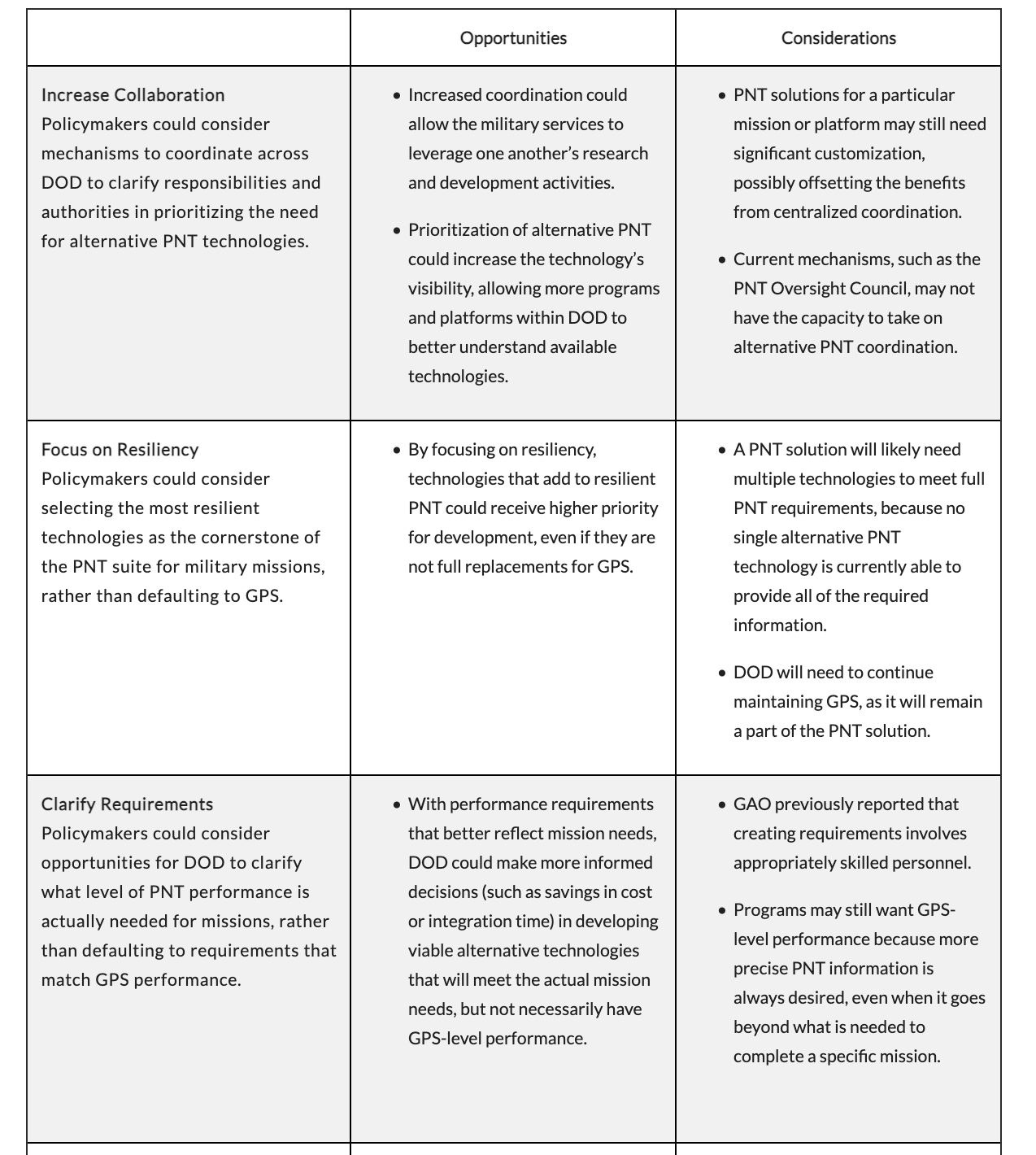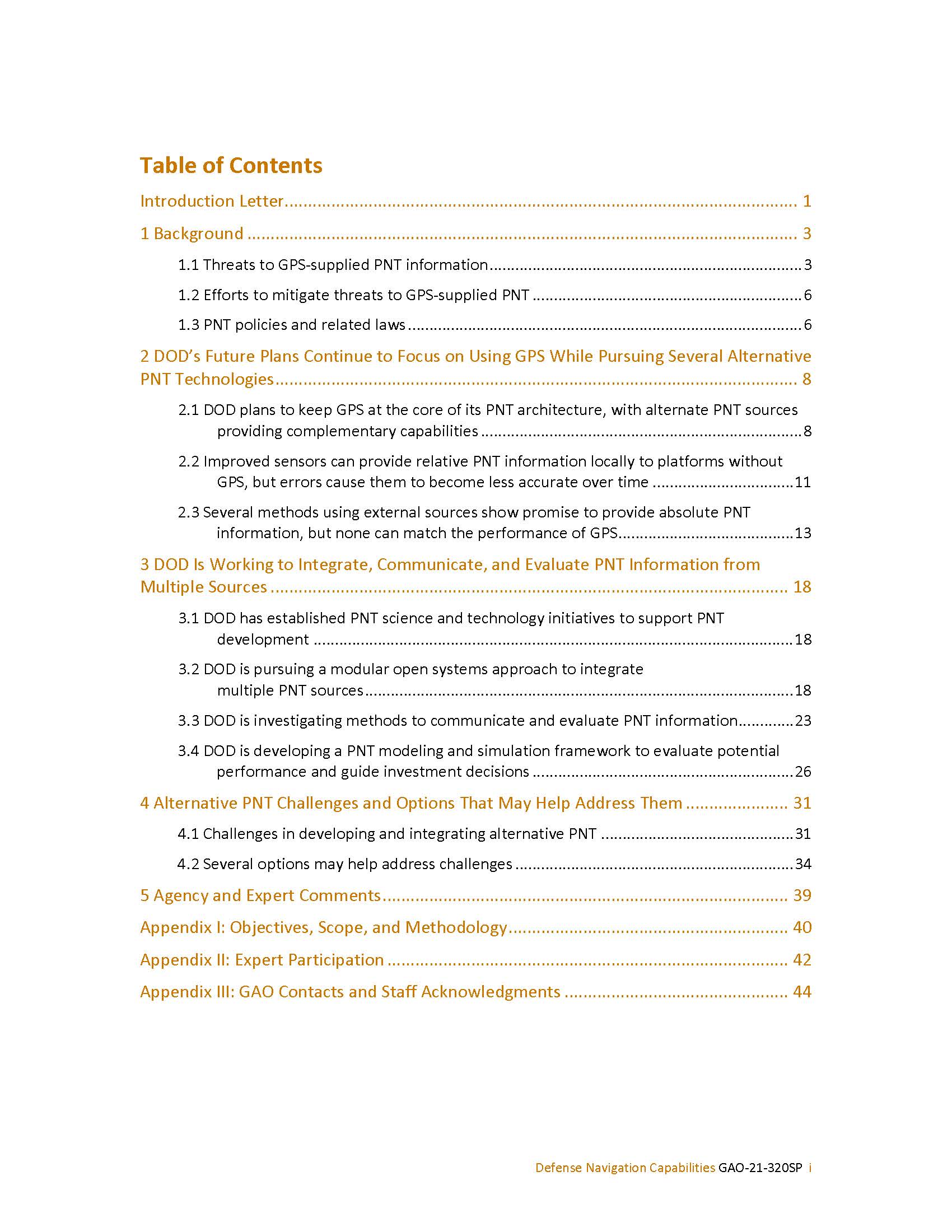The Government Accounting Office (GAO) has issued a 51-page report examining the challenges the Department of Defense faces in developing and fielding new positioning, navigation and timing (PNT) technologies to complement, augment or replace GPS when it is unavailable. It found that the DOD is not doing enough in this regard.
“Officials from across DOD and experts told GAO that alternative PNT solutions are not prioritized within DOD. For example, there is no central program office responsible for developing the variety of alternative PNT technologies across DOD. DOD’s continued reliance on GPS, despite known GPS vulnerabilities to disruption, presents a challenge for obtaining sufficient support to develop viable alternatives.”
The GAO report appears coincidentally close to one by the European Accounting Office calling the Galileo program to task for not working hard enough to develop downstream markets. It seems the bean counters have satnav operators squarely in their sights and are firing away.
“Both experts and DOD officials said that the vulnerabilities of relying on GPS are well known, but DOD’s response may not be sufficient to address the threat. GPS remains the primary source of PNT for the foreseeable future in the DOD. Experts at the meeting that we convened questioned the resiliency of relying on GPS as the core of the military PNT solution. For example, one expert told us that DOD uses GPS even when it is not needed, and given the threats to GPS, this overreliance introduces vulnerabilities.”
The report states that there are limited incentives for industry to actively participate in this process, and that the commercial market is outpacing defense efforts to develop alternatives.
“According to experts, another challenge to developing PNT solutions is a lack of incentive for industry. One expert stated that the proposed DOD PNT solution of an array of several different PNT technologies divides an already small market, creating less incentive for companies. One DOD official had the same 43GPS performance includes many attributes such as accuracy, availability, and update frequency. However, one DOD official noted that ships may have other combat related missions with more stringent PNT requirements. concern, stating that having multiple parallel PNT solutions might lead to a fractured industrial base.
“According to one expert, the DOD market for alternative PNT technology is not big enough to achieve economies of scale like those seen with GPS. Another expert stated that there is a lot of money going into commercial R&D— specifically navigation—and that the commercial market has the potential to outpace DOD, unless DOD finds a way to take advantage of the gains in the commercial sector. This expert stated that a modular open system architecture (MOSA) could provide DOD with an easy way to implement new technologies. A DOD official said that the department relies on the military services to be aware of developments in the commercial sector.”
GAO developed six policy options to help DOD address these difficulties and perceived shortfalls.


Experts outside the DOD who were consulted for the report were:
John W. Betz
Fellow
The MITRE Corporation
Bill Bollwerk
Consultant
United States Naval Observatory
Alison K. Brown
President and Chief Executive Officer
NAVSYS Corporation
Joseph Broz
Executive Director and Chair of the Governing Board
The Quantum Economic Development Consortium
Senior Advisor for Quantum Air Force Research Laboratory
Kevin Coggins
Vice President
Booz Allen Hamilton
Elizabeth Donley
Chief; Time and Frequency Division
National Institute of Standards and Technology
Demoz Gebre-Egziabher
Professor; Department of Aerospace Engineering and Mechanics
University of Minnesota
Director, Minnesota Space Grant Consortium
Dana A. Goward
President
Resilient Navigation and Timing Foundation







